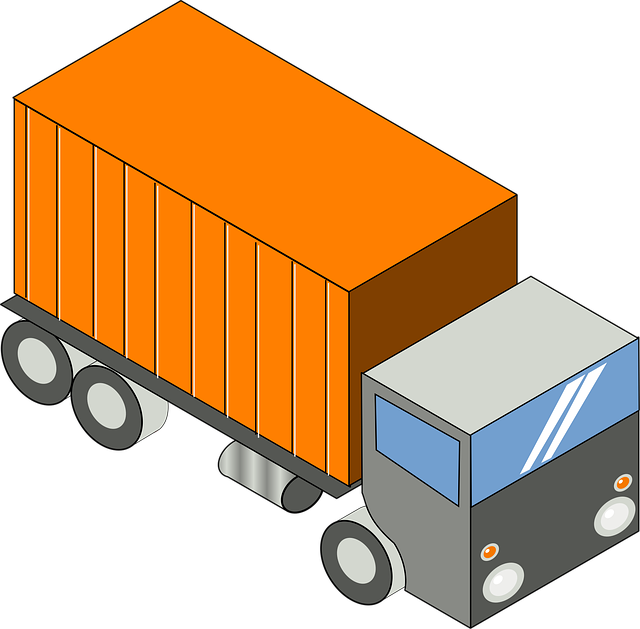Looking to register your car in California? This comprehensive guide walks you through the entire process, from understanding key requirements to securing your license plates. We break down essential steps like gathering necessary documents, undergoing DMV VIN verification, and completing the registration application. By following these clear instructions, you’ll be on your way to a smooth and efficient vehicle registration experience. Don’t miss crucial details on fees and plate issuance, too!
- Understand California Vehicle Registration Requirements
- Gather Necessary Documents for Car Registration
- Visit Your Local DMV for VIN Verification
- Complete the Registration Application Process
- Pay Vehicle Registration Fees and Obtain License Plate
Understand California Vehicle Registration Requirements

Before diving into the registration process, it’s crucial to understand California’s vehicle registration requirements. These regulations are designed to ensure road safety and maintain accurate records of vehicles within the state. One key aspect is the DMV VIN verification process, where the unique identifier on your vehicle (Vehicle Identification Number or VIN) is cross-referenced against state records to validate ownership and specifications. This step is often facilitated by a mobile vin verifier or vin inspection, ensuring that your car meets all legal standards before registration.
Additionally, California requires specific documentation, including proof of insurance, a valid driver’s license, and payment for registration fees. The process can be completed at a local DMV office or, in some cases, through an online system, offering convenience and efficiency. Remember to bring all necessary documents, as any missing information may delay your vin inspection and registration.
Gather Necessary Documents for Car Registration

Before you begin the registration process, make sure to gather all the essential documents. The California Department of Motor Vehicles (DMV) requires specific papers for car registration, ensuring a smooth and efficient procedure. One crucial document is the Vehicle Identification Number (VIN) verification report, which can be obtained through a mobile vin inspection or by visiting a DMV field office. This process involves checking the vehicle’s history to ensure it meets safety standards and isn’t stolen.
Additionally, you’ll need proof of identity, such as a driver’s license or passport, and valid insurance coverage for your vehicle. It’s also recommended to have the purchase documents ready, especially if you’ve recently bought the car. With these necessary documents in hand, you can proceed with confidence to complete the registration at a DMV center or even opt for a convenient vin inspection service provided by certified mobile verifiers.
Visit Your Local DMV for VIN Verification

To register your car in California, one crucial step is visiting your local DMV for VIN (Vehicle Identification Number) verification. This process ensures that your vehicle meets all safety and emissions standards required by the state. During this visit, a DMV representative will physically inspect your car to confirm its authenticity and condition using the unique VIN as a reference point.
A mobile vin verifier can also be utilized, offering an alternative to visiting the DMV in person for this specific procedure. This option is especially convenient when dealing with out-of-state purchases or hard-to-reach locations. The vin inspection process remains vital to ensuring road safety and proper vehicle registration, regardless of whether you opt for a traditional or mobile service.
Complete the Registration Application Process

To complete the registration process for your car in California, you’ll need to go through a series of steps that include a DMV (Department of Motor Vehicles) vin verification. This starts with filling out the Registration Application, which can be done online or in-person at any local DMV field office. Ensure all information is accurate and up-to-date, including your personal details and vehicle specifications.
One efficient way to streamline this process is by utilizing mobile vin verification services. These allow you to quickly and conveniently confirm your vehicle’s identity through its unique VIN (Vehicle Identification Number). A mobile vin inspector can perform this check remotely, saving you time and effort. Once the application is complete and the VIN has been verified, you’ll be one step closer to legally registering your car in California.
Pay Vehicle Registration Fees and Obtain License Plate

After completing your vehicle’s registration application at the California DMV, the next step is to pay the required fees for registration and obtain your license plates. The amount you pay will vary depending on your vehicle’s type and age. You can typically do this online or in person at a local DMV office.
Before acquiring your plates, ensure that your vehicle has undergone a successful DMV VIN verification. This process involves checking the Vehicle Identification Number (VIN) of your car to confirm its authenticity and identify any potential issues. Alternatively, you could use a mobile vin verifier for a quick and convenient vin inspection at your convenience before proceeding with registration. Once your vehicle passes this step, you’ll be ready to receive your license plates and officially register your car in California.
Registering a car in California involves understanding state requirements, gathering essential documents, and completing a straightforward application process. After passing the necessary VIN verification at your local DMV, you’ll pay the required fees and receive your license plates, ensuring your vehicle is legally registered and ready to hit the roads. Remember to keep your registration up-to-date for smooth driving in the Golden State.
